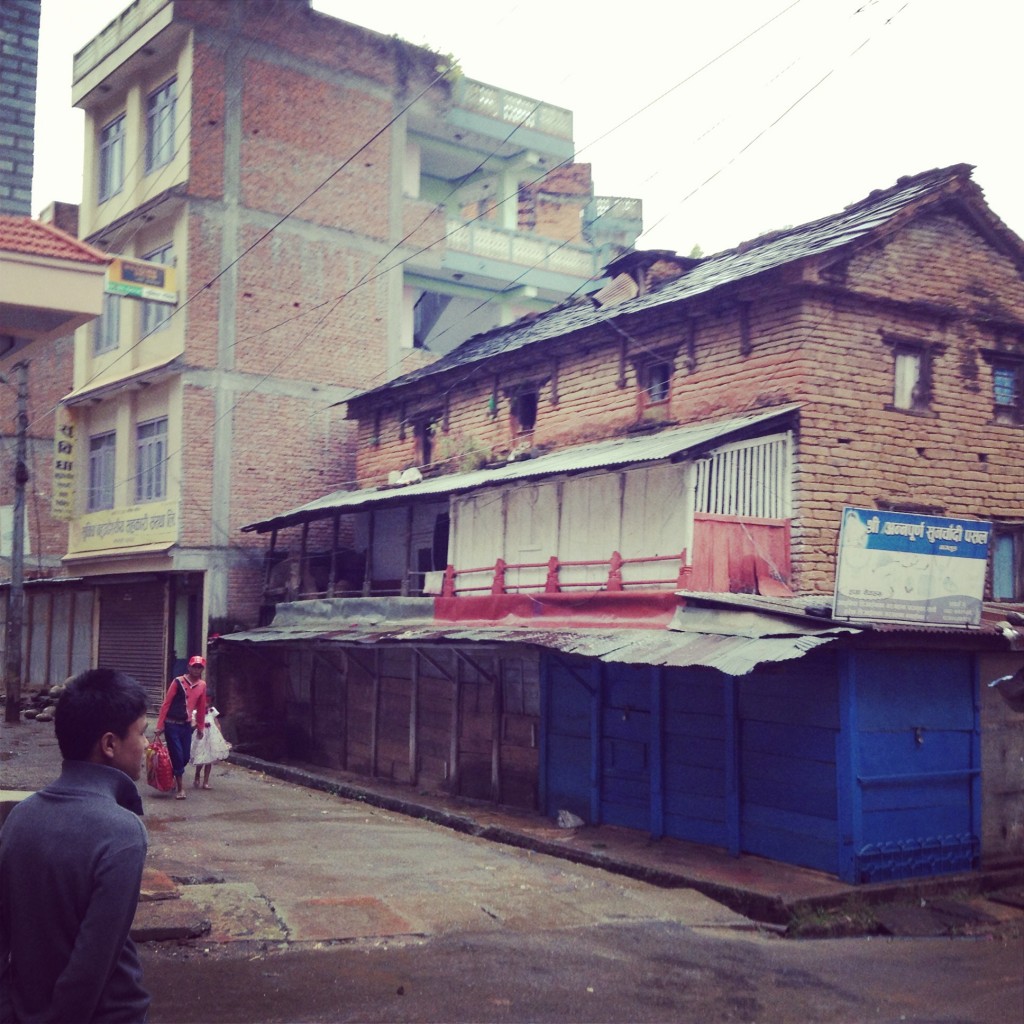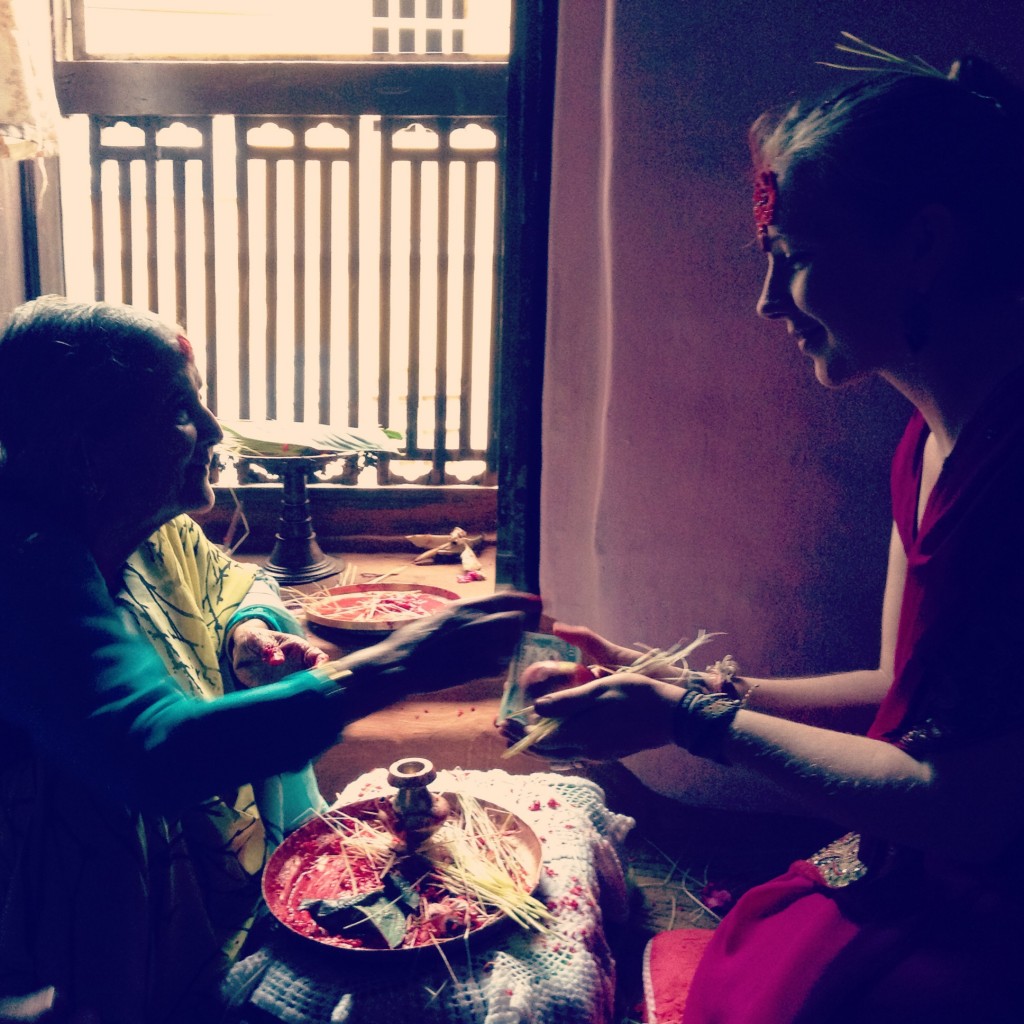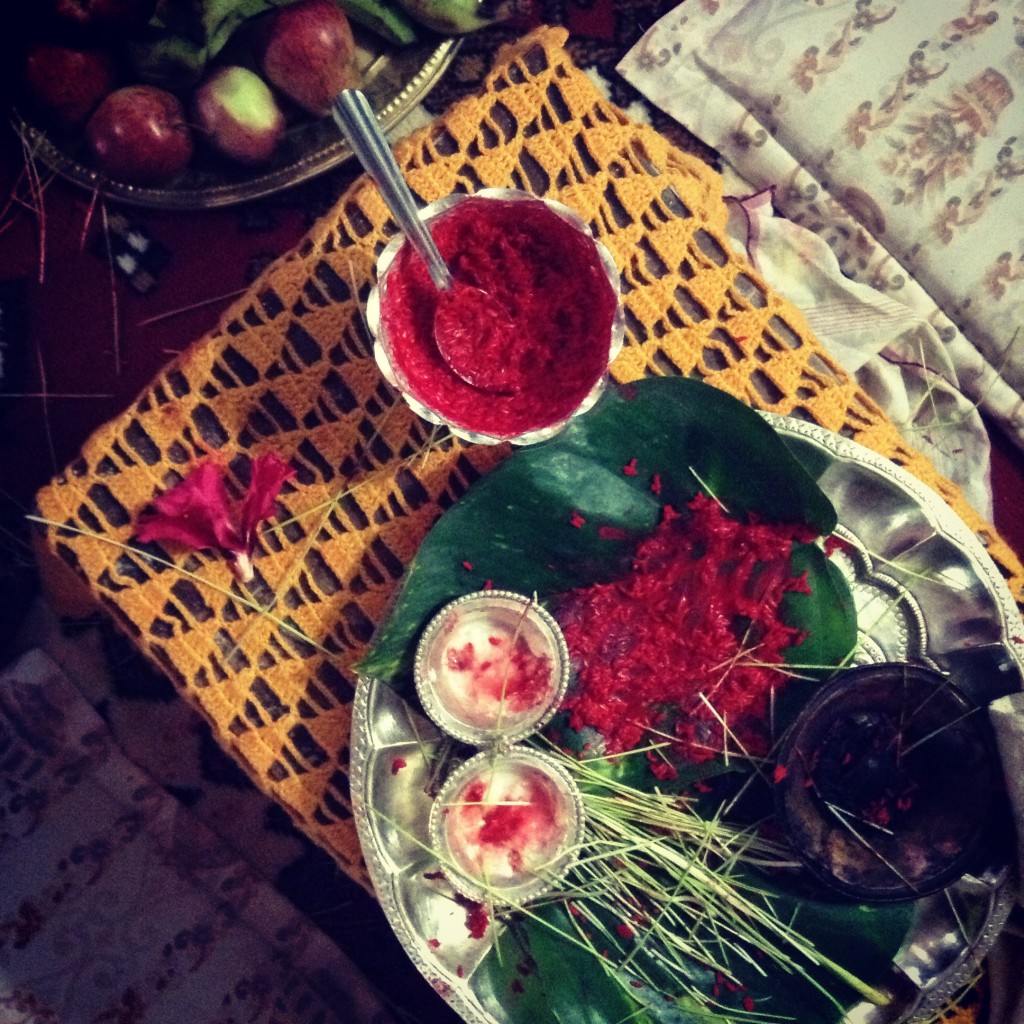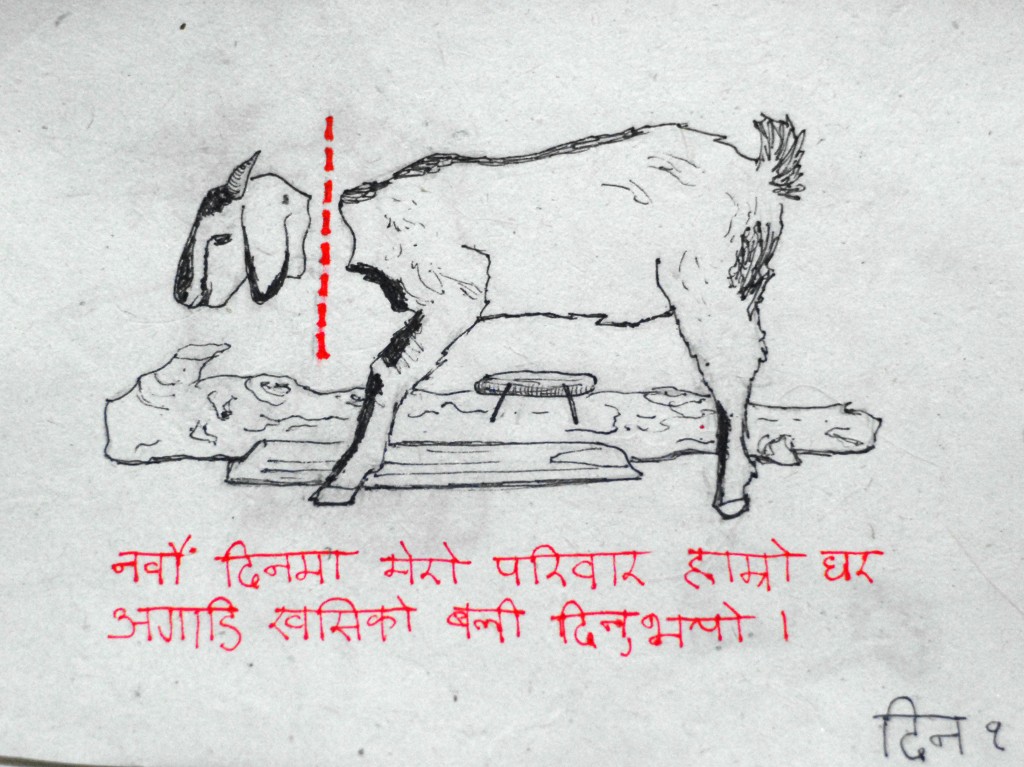Dasain: Nepal’s biggest holiday
Tis the season – for goat sacrifices, giant forehead tika, and deep-fried sweet bread… Yes, it is time for Nepali’s biggest and most anticipated holiday, Dasain. It begins on the new moon of the Nepali month Ashvin and ends on the full moon 15 days later. It is a celebration of good defeating evil, of the Hindu Goddess Durga defeating evil demons after an epic ten day battle.
So, what’s this mean for the average Nepali? First, it means – going home to be with family. The majority of Nepali people will return to their home village from wherever in the world they may be the rest of the year so they may celebrate with their extended family. The holiday is a genuine national homecoming. For the villages that are usually sparse of young men, they become quite full and jovial. For newer bazar towns such as the one I live in, the city shuts down and takes rest, as the majority of residents return to their villages.

Dasain means – planting barley seeds in cow dung in a pot that symbolizes the goddess of power, Goddess Durga, on the first day, the day of the new moon. A priest then blesses the vessel, calling upon Goddess Durga to show her presence by sprouting barley plants. All vessels are placed in a special temple called a “Dasain Ghar” or Dasain building. There is one right outside my house and watching its use for dasain solved the 9 month mystery as to why the tiny temple stood neglected and un-used the entire time I’ve been here.
Dasain means – constructing a giant swing out of bamboo for the kids to play on till exhaustion overcomes them…

Dasain means – going to temple to sacrifice a rooster, and again to sacrifice a goat or buffalo. Honestly, the eighth day of dasain really could be called “goat extermination day” because so many goats are sacrificed across the country. I’ve heard a variety of figures, but I believe it’s safe to say that between 200,000 and 500,000 goats are killed on this single day across a span of land the size of Tennessee. The act qualifies as a sacrifice because there are religious reasons for killing the animal on the proper day, and because there are many rituals that must be followed: the goat must be oriented the right direction (head toward the house or temple), he should be alligned with a banana trunk and shoot of sugar cane, he should be tika-ed (given red powder on his forehead) and blessed with marigolds by a village elder. In hindu religion, blood is symbolic for fertility, and is therefore appropriately shed for the gods. After the ritual is finished, the family takes the meat home to eat a meal that has been blessed by divinity.
(those of you who were following me a year ago may recognize this sketch).
Dasai means – on the tenth day, going house to house between family members to receive special tika, fruit, barley sprouts and money. It feels a whole lot like trick-or-treating, really. After a few hours hopping between my friends homes in town, my bag had no fewer than a dozen apples, half dozen bananas, and a handful of roti (fried bread). Dasain tika uses the usual vermillion (vibrant red) tika powder as a base, blended with yogurt and rice grains.

The amount of tika on a person’s head clearly diminishes with age, for it is the elder’s duty to give tika to younger members of the family in order to bless their coming years with abundance and prosperity. Thus the oldest men and women will have just a finger print’s worth – the amount a person gives to themselves during prayer – on their temple; parent’s in their 50s have tika about an inch and a half in diameter; their 20-something year-old children about 2.5 inches; and the children – the tika completely covers their foreheads! When they give tika, they also speak a small blessing and give jamara (the barley sprouts) to put on your hair.

Such are the ways of Nepali’s biggest holiday. This year the celebrations were dampened by an out-of-season wet, cold front that swept up the Himalayas from the Indian Ocean, and by the death of a distant relative in my host family. By Hindu creed, when a family member passes on, that family is not allowed to worship for 13 days. So it became my duty to pass along roti (fried bread) and receive tika around town on behalf of my family. But aside from tika day, I’ve had a very mellow few days at home, reading to the sound of rain outside while bundled up in blankets in my cold, concrete room. Minus the water, it’s a chilling reminder that winter is well on it’s way….


